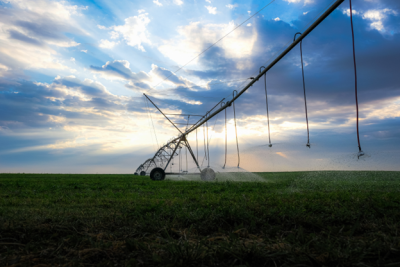Investigating Agricultural Trade’s Impact on Global Water Resources
Growing crops for food and other necessities consumes water at their point of origin, but some of these crops get traded elsewhere. The consumed water is embedded in the traded crop commodities through a concept known as virtual water. Researchers used a multisector long-term global model, the Global Change Analysis Model (GCAM), to explore the potential effects of agriculture trade on virtual water trade and total water consumption. They found that across a set of increasing and decreasing future global trade scenarios, the amount of water virtually traded changes by +400% and -20%, respectively. Additionally, they found that the global demand for water for agriculture may vary by up to the volume of Lake Michigan from 2020 – 2100.
This work highlights the need for integrated water management strategies around the world in the face of future multisectoral uncertainties. Recent literature has started to quantify future virtual water trade patterns, but this study takes the analysis a step further by introducing uncertainty into global trade. This research will enable the identification of regions that may be relied upon for agricultural trade, and its associated water demand in differing futures. Future research projects can expand upon the studied scenarios and understand how sensitive water resources are to global agricultural trade evolution.
The rate of globalization associated with agricultural markets can drastically alter the areas from where crop commodities are grown and traded. As uncertainties surround future socioeconomic growth, energy transitions, and the resultant demand for agricultural commodities, meeting this changing demand will affect energy, water, and land around the world. Previous studies largely focused on the water implications of removing trade barriers or solely examined historical timeframes. Researchers used GCAM to explore future virtual water trade and the associated changes in water resource demands due to various levels of future agricultural trade. The results show that enhancing global agricultural trade saves nearly 6,000 km3 through the end of the century, whereas declining trade may result in more than 6,000 km3 of additional irrigation water withdrawals required to meet demand. Over 65% of these changes occur via nonrenewable groundwater extraction to produce crops in dry regions. This study highlights the need to increase scientific understanding of how trade integration may evolve in the future and the potential responses of water resources to maintain food security and limit additional water stress.

